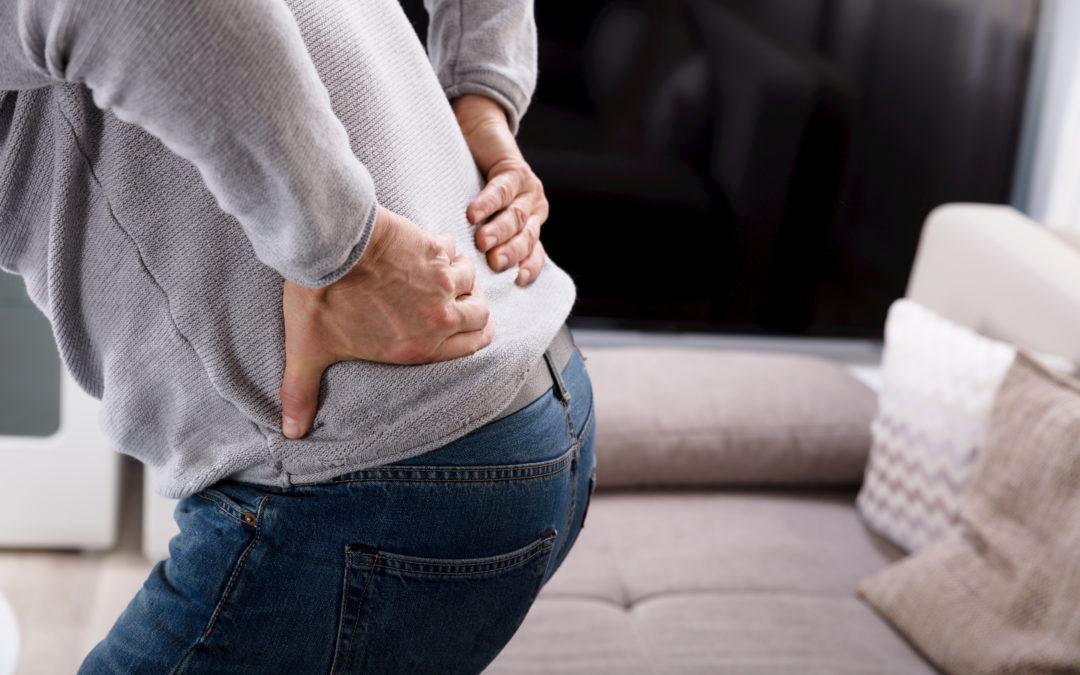Too much time sitting at a desk or on the couch can lead to all sorts of health issues — from an increased risk of heart disease to obesity. And yes, it can also lead to something known as “dead butt syndrome.”
Now, when you stop giggling, consider that dead butt syndrome is a real medical condition, also referenced as “gluteal amnesia.” But what is it exactly?
Let’s take a few minutes to get the facts.
Defining dead butt syndrome
First things first, when you have this condition, your butt isn’t actually dead. That would require the gluteal muscles to die, and while they don’t work as effectively when you have this condition, they are still very much alive.
The fact of the matter is: Most of us have experienced at least a mild case of gluteal amnesia, or dead butt syndrome, at some point.
That’s because it simply refers to discomfort and pain in the rear end, usually after sitting for a length of time.
Dead butt syndrome occurs when one of the muscles in the butt — the gluteus medius — stops firing correctly. Because that muscle helps to stabilize the pelvis, when it doesn’t work effectively, it can cause a variety of symptoms, including pain in the lower back and hips. This is caused by the body trying to compensate for one gluteal muscle not working.
The causes of dead butt syndrome
While we’ve established what dead butt syndrome is, why does it happen? Well, more than one thing can cause gluteal amnesia, but too much time in a sedentary position is the main cause these days.
In a world where most people spend an inordinate amount of time in front of a computer or TV, this condition is on the rise.
To really understand what causes the condition, you need to understand how muscles work to begin with, in particular those in the glutes. In a normally functioning backside, the muscles shorten and lengthen in opposition to each other.
When you’re sitting for a length of time, two forces are in action — your hip flexors will tighten up and your gluteal muscles will lengthen. That’s causing your hips to work while your glutes relax…and weaken.
That’s when your body starts to try and compensate for the comprised gluteal medius, leading to pain and discomfort.
As mentioned above, though, while the condition is common among those who are sitting for a long time, it can also occur for other reasons. Dead butt syndrome is also commonly diagnosed among physically fit athletes, including runners.
It occurs in athletes who over-train one part of the body but undertrain other parts, leading to imbalance. This leads to the body mechanics getting out of whack.
What you can do to prevent dead butt syndrome
A diagnosis of dead butt syndrome does not sentence you to a lifetime of discomfort. You can take steps to prevent gluteal amnesia, mostly by incorporating healthy living habits into your routine.
- Get up and get moving! This one’s the most obvious, but if your dead butt syndrome is a result of too much time sitting, set reminders to get up and move around at least every hour. If you’re stuck in a sedentary position — say, in a car or airplane — glute squeezes and hamstring stretches can have the same effect of waking up the gluteal muscles.
- Squeeze the backside. Yes, we said that! Even when you’re forced to remain seated for a length of time, you can still keep those muscles firing. Squeeze the gluteal muscles regularly while you’re in a seated position.
- Mix things up. If possible, work from multiple positions throughout the day. Spend some of the day in your regular office chair, part of it sitting on an exercise ball to engage different parts of your core and backside, and part of it standing at your desk. The key is variety to use multiple muscles.
- Train your backside. When you’re working out, be sure to regularly incorporate exercises that target the gluteal muscles. Squats, leg lifts and glute bridges are all workout moves that effectively fire up the glutes.
Dealing with discomfort and uncertain of the cause? Visiting your primary care physician is your best first step for diagnosing any injury or illness. Find a primary care physician near you.







